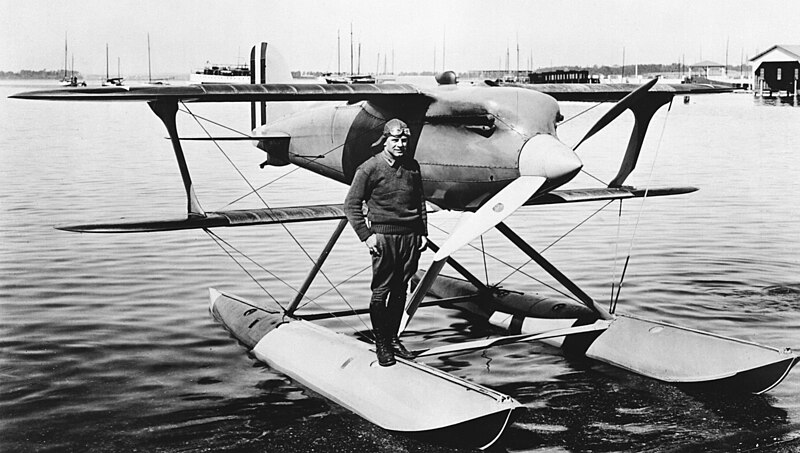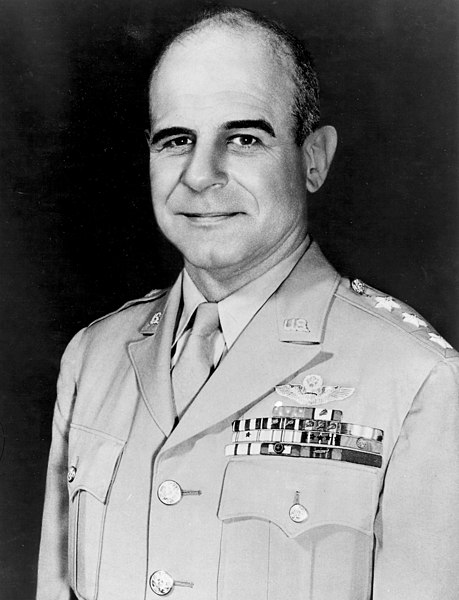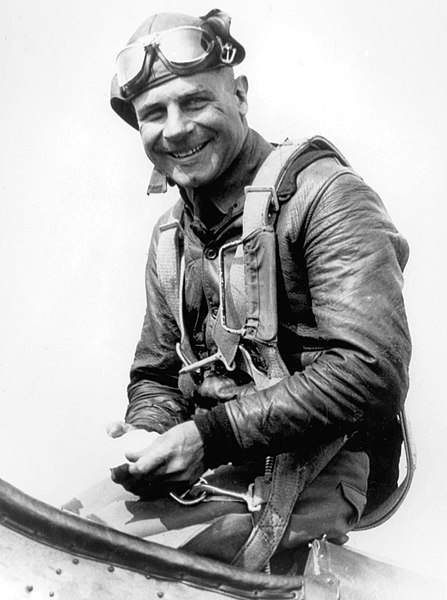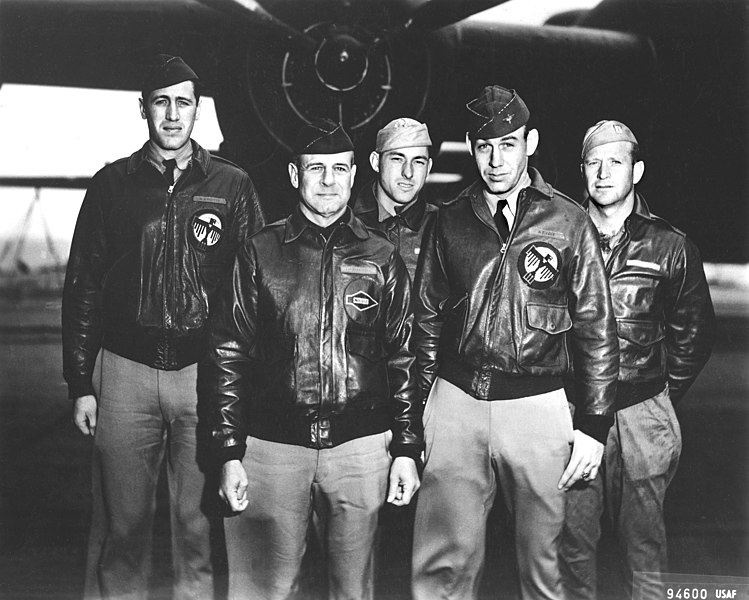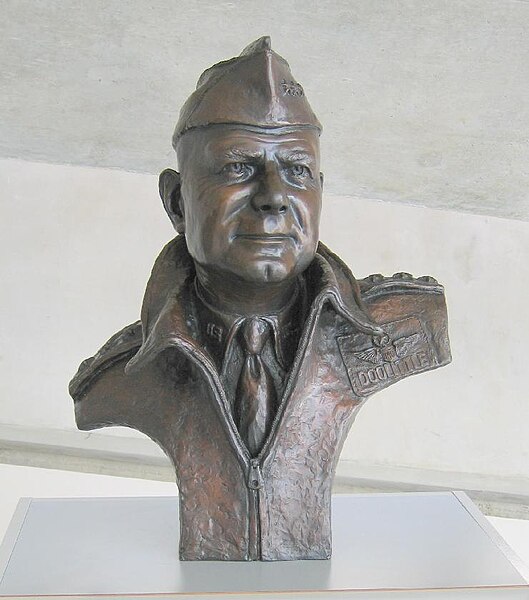Step into the exhilarating realm of aviation history and discover the captivating narrative of James H. Doolittle, one of the most legendary aviators of all time. As we delve into the interesting life of this great character, we will embark on a journey packed with adventure, bravery, and incredible feats. Doolittle’s narrative is a monument to the human spirit’s boundless potential, from his daring accomplishments as a pilot to his groundbreaking contributions to aviation technology. Join us as we delve into the gripping stories of his life, where bravery soars above the clouds and the sky becomes his canvas for glory. Prepare to be inspired by the incredible story of famous aviator James H. Doolittle.
Who is James H. Doolittle?
James H. Doolittle’s remarkable life was marked by captivating adventures, beginning with his early years in Alaska, where he gained fame for his boxing skills. James H. Doolittle, born on December 14, 1896, in California, experienced a formative period of his life in Nome, Alaska. However, it was at the 1910 Los Angeles International Air Meet held at Dominguez Field that his deep intrigue for aviation was kindled upon witnessing an aircraft for the first time.
After completing his education at Manual Arts High School in Los Angeles, Doolittle pursued further studies at Los Angeles City College, where he had the opportunity to study alongside future renowned film director Frank Capra. Following that, he was accepted into the College of Mines at the University of California, Berkeley, where he also joined the ranks of the Theta Kappa Nu fraternity. During the Great Depression, the fraternity later merged with Lambda Chi Alpha, navigating through the difficult circumstances of the era.
However, Doolittle’s unwavering passion for aviation soon overshadowed his academic pursuits. In October 1917, he took a leave of absence from college and enlisted as a flying cadet in the Signal Corps Reserve. Before taking flight at Rockwell Field in California, he received comprehensive ground training at the University of California’s School of Military Aeronautics.
In March 1918, Doolittle achieved his Reserve Military Aviator designation, marking the attainment of his official rating, and subsequently received a commission as a second lieutenant in the Signal Officers Reserve Corps of the United States Army. This marked the beginning of a remarkable aviation career that would propel Doolittle to become one of history’s most revered and celebrated aviators.
Early Aviation Career
During the First World War, James H. Doolittle played a crucial role as a flight instructor in various locations across the United States. He was stationed at several aviation centers, including Camp John Dick Aviation Concentration Center (“Camp Dick”) in Texas, Wright Field in Ohio, Gerstner Field in Louisiana, Rockwell Field in California, Kelly Field in Texas, and Eagle Pass in Texas. At Rockwell Field, Doolittle assumed the positions of both flight leader and gunnery instructor, showcasing his expertise in the field.
Doolittle’s service continued with the 104th Aero Squadron and later the 90th Aero Squadron, part of the 1st Surveillance Group stationed at Kelly Field. His assignment with the 90th Aero Squadron led him to the Eagle Pass unit, where he participated in border patrols along the Mexican border. It was during this period that Doolittle honed his skills as a pilot and aviation engineer, diligently maintaining and repairing the squadron’s aircraft.
Following the conclusion of the war, Doolittle’s exceptional performance caught the attention of his superiors, and three of his commanders nominated him for retention in the Air Service. This recognition propelled him into various aviation projects, where he made significant contributions and garnered acclaim for his competence and resourcefulness.
In 1921, Doolittle became involved in a daring mission to retrieve a plane that had crash-landed in a Mexican canyon during Alexander Pearson Jr.’s transcontinental flight attempt. As the expedition’s engineering officer and pilot, Doolittle was tasked with locating the aircraft and restoring it to operational status. He accomplished the remarkable feat of flying the reconstructed plane out of the canyon using a 400-yard airstrip carved into the bottom of the gorge.
Interwar Period and Rise to Prominence
After his service in World War I, James H. Doolittle continued to pursue his passion for aviation and further his education in the field. He enrolled in the Air Service Mechanical School at Kelly Field and later attended the Aeronautical Engineering Course at McCook Field. In 1922, Doolittle accomplished his educational pursuits with distinction, obtaining a Bachelor of Arts degree from the renowned University of California, Berkeley. During his time there, he also earned membership in the esteemed Lambda Chi Alpha fraternity, adding to his notable achievements.
Doolittle quickly rose to prominence as one of the most renowned pilots during the interwar period. He embarked on a groundbreaking journey on September 4, 1922, using early navigational instruments. Piloting a de Havilland DH-4 aircraft, Doolittle embarked on the first-ever cross-country flight from Jacksonville Beach to Rockwell Field. Covering a distance of 2,163 miles, he completed the remarkable feat in 21 hours and 19 minutes, with only a single refueling stop at Kelly Field. In recognition of his pioneering achievement, the United States Army honored him with the Distinguished Flying Cross.
Following his historic transcontinental flight, Doolittle was assigned to the Air Service Engineering School at McCook Field in Dayton, Ohio. He considered this posting to be of significant importance as it aimed to bridge the gap between pilots and engineers.
Doolittle noted the lack of complete support and understanding between the two groups during the early 1920s, with engineers often viewing pilots as daring individuals. Drawing upon his engineering expertise, Doolittle served as a mediator, facilitating better collaboration and communication between pilots and engineers. Eventually, he was transferred to the Massachusetts Institute of Technology (MIT) to pursue a master’s degree in aeronautical engineering, further solidifying his role as a bridge-builder in the aviation industry.
Doolittle in the Aviation Engineering
After completing his master’s degree in aeronautics at MIT, Doolittle continued his training at Naval Air Station Anacostia in Washington, D.C. He also served on the Naval Test Board stationed at Mitchel Field on Long Island, New York, where he actively participated in endeavors to break air-speed records in the area. Notably, in 1925, Doolittle emerged victorious in the Schneider Cup race, piloting a Curtiss R3C at an impressive average speed of 232 MPH. This outstanding accomplishment earned him the prestigious Mackay Trophy in 1926.
Doolittle was given a leave of absence in 1926 to do demonstration flights for Curtiss Aircraft in South America. He fractured both of his ankles while performing acrobatics in Chile in what became known as the Night of the Pisco Sours. Doolittle continued to fly despite his injuries and excelled over the competitors. He returned to America and was hospitalized at Walter Reed Army Hospital until April 1927.
After recovering, Doolittle was assigned to McCook Field for experimental work and also served as an instructor pilot for the Air Corps Reserve’s 385th Bomb Squadron. In 1927, Doolittle became the first person to do an outside loop, which was previously regarded to be a lethal technique. At Wright Field in Ohio, he did the dive in a Curtiss fighter, plunging from 10,000 feet, achieving a speed of 280 mph, bottoming out upside down, then ascending and completing the loop.
The Doolittle Raid
After spending several years as a test pilot and aeronautical engineer, Doolittle rejoined the Army Air Corps on a full-time basis in 1940.
With the United States’ growing engagement in World War II, General Henry H. “Hap” Arnold presented Doolittle with a daring proposition in the early stages of 1942. With Japan’s defensive perimeter in the Pacific proving difficult to breach using traditional carrier-based attacks, Arnold tasked Doolittle with leading a daring mission to conduct an airstrike on the Japanese mainland. The objective was to deal a significant blow to Japan’s morale.
Doolittle’s covert mission involved launching B-25 bombers from the aircraft carrier USS Hornet to bomb Japan. The initial plan was to target five major cities. However, the Hornet was unexpectedly detected, forcing the planes to launch a day earlier than planned. With limited fuel reserves, the bombers would have to reach their targets and then proceed to China.
On April 18, 1942, despite navigating through storms and encountering anti-aircraft fire, the sixteen bombers pressed on and dropped four bombs each on Tokyo, targeting industrial sites and a light cruiser. Unfortunately, some of the bombs hit civilian areas, resulting in the loss of 50 lives and injuries to 400 people.
Following the bombing, the planes continued their journey towards China. However, due to fuel exhaustion, all of them fell short of reaching their intended destination. Most of the crew members were forced to parachute to safety, aided by locals who provided assistance. One crew, however, was detained by the Soviets in Vladivostok.
While the Doolittle Raid had mixed outcomes, it had a significant impact on morale. It demonstrated that Japan was vulnerable to attack and uplifted the spirits of the American people. Notably, it marked the first time that American planes flew over Japan during the war. Due to his exceptional leadership during the operation, Doolittle was elevated to the rank of brigadier general and bestowed with the distinguished Medal of Honor in recognition of his remarkable accomplishments.
The raid did, however, invite retaliation from the Japanese government, leading to brutal atrocities against American prisoners of war, including the infamous Bataan Death March. Nonetheless, the Doolittle Raid remains a significant event in history, showcasing both the daring and the risks associated with strategic military operations.
Retirement and Post-Retirement Life
After the successful Doolittle Raid, Doolittle’s accomplishments earned him a promotion to brigadier general and command of the Twelfth Air Force in North Africa. Later, he assumed command of the Fifteenth Air Force in the Mediterranean theater. During his time in this role, Doolittle implemented improvements to U.S. bomber escort tactics, enabling American fighters to effectively engage their German counterparts. Subsequently, he was entrusted with leading the Eighth Air Force, which boasted an impressive fleet of 42,000 combat aircraft and held the distinction of being the most formidable air force in history.
Under Doolittle’s command, the Eighth Air Force embarked on a strategic bombing campaign against German targets in Europe. Doolittle introduced significant changes to the existing plan, reinforcing bomber formations and introducing fighter escort techniques to safeguard them from enemy fighters. Despite facing criticism from some subordinates who expressed concerns about the vulnerability of bombers during daylight operations, Doolittle advocated for daylight bombing. His tactics proved successful, establishing the Eighth Air Force’s reputation for precision bombing.
After the culmination of World War II, Doolittle took on the position of Special Assistant to the Air Force Chief of Staff, assuming a vital role in supervising the advancement of cutting-edge aircraft and weaponry. Beyond his involvement in the realm of military innovation, Doolittle’s contributions extended to matters of national security, as he held a membership in the esteemed National Security Council and actively participated in diverse government entities. Doolittle’s influence extended to the realm of national security, as he served as a member of the National Security Council and actively participated in various government bodies.
In 1954, President Dwight Eisenhower sought Doolittle’s expertise and requested him to prepare a report on clandestine operations for the United States. In this study, Doolittle asserted that the “acceptable norms of human conduct do not apply” to espionage during the Cold War. The report, shrouded in secrecy, remained classified for several years before being declassified.
After retiring from the Air Force as a lieutenant general in 1959, Doolittle resumed his position as a vice president at Shell Oil Company. In recognition of his exceptional contributions, President Ronald Reagan elevated him to the rank of full four-star general in 1985. Doolittle continued to serve as a spokesman for the Air Force and actively engaged in veterans’ organizations until his passing in September 1993 at the age of 96.
In conclusion, the life of James H. Doolittle stands as a testament to the indomitable spirit of adventure, perseverance, and ingenuity. His groundbreaking ventures in aeronautical engineering and fearless exploits in combat exemplify his role as a genuine trailblazer in aviation. Exploring the extraordinary life of James H. Doolittle is akin to embarking on a captivating journey through the annals of history, the realms of aviation, and the remarkable depths of the human spirit. As we unravel the riveting tale of the renowned aviator James H. Doolittle, we are reminded of how exceptional individuals like him have shaped history in their own unique ways. Similarly, the journey of Annie Oakley, the legendary sharpshooter, is a testament to the remarkable achievements of extraordinary figures. Dive deeper into the inspiring story of Annie Oakley and discover how she became a legendary sharpshooter.

